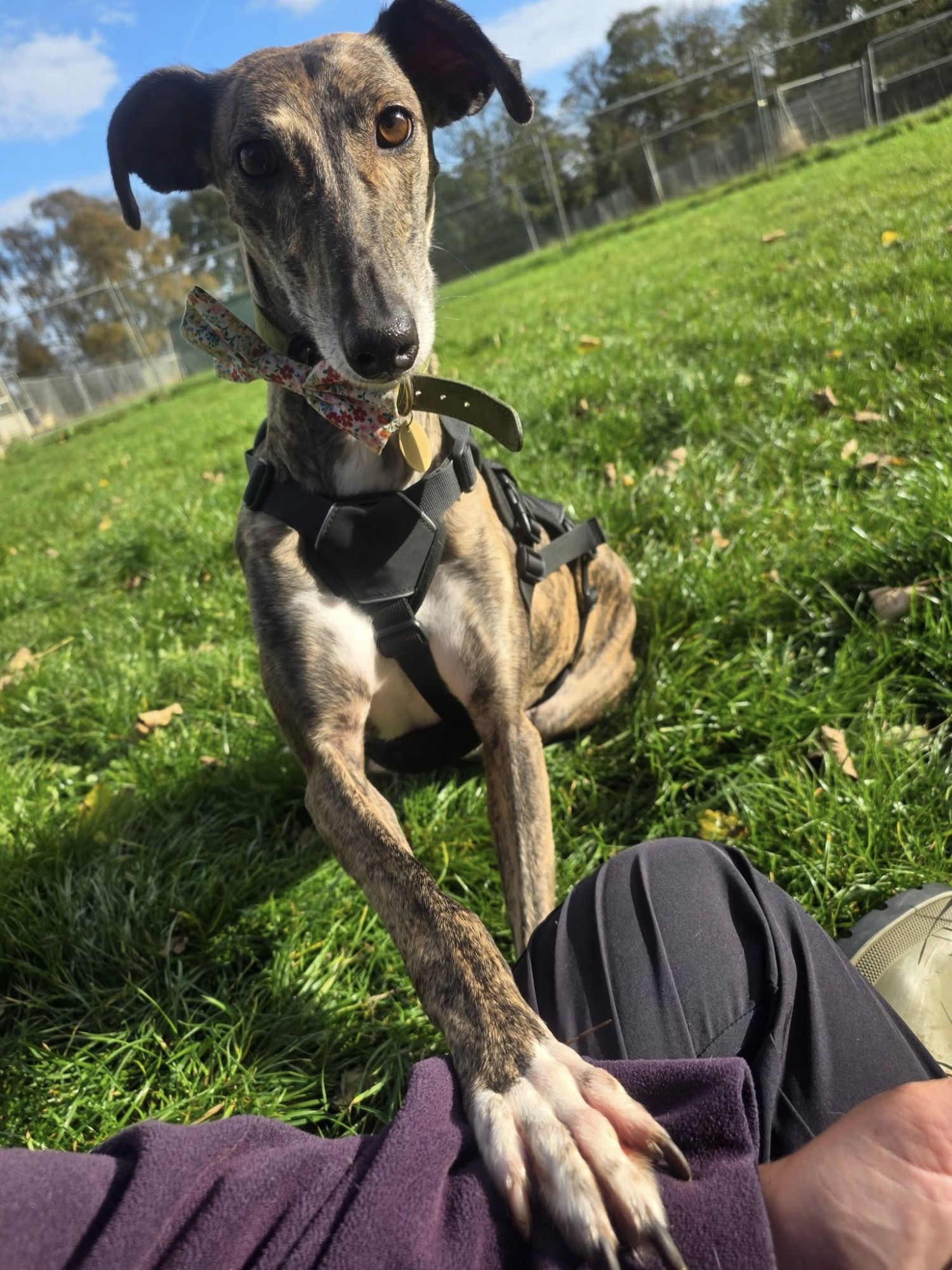New cat
How to set up your home to help your new cat settle in quickly
Cats, Adopters, Cat behaviour, Kitten

At Bath Cats and Dogs Home, we often receive stray dogs brought in by Dog Wardens from Bath, northeast Somerset and parts of Wiltshire. Over the past few years, we have had a significant increase in lurcher-type dogs being found stray or abandoned, and this is likely linked to illegal hunting practices.
Illegal hunting activities such as hare coursing and lamping are forms of poaching where dogs are used to chase and kill wildlife. The dogs are set loose to chase the animal, and there are bets on which dog catches it.
Offenders often travel long distances to areas with flat land, open fields and plenty of wildlife, such as those found in Wiltshire. If the poachers are disturbed or their dogs run off, the dogs are often left behind which is how many of them end up as strays in our area.
Lurchers who have been used for hunting are what we call ‘working dogs’, rather than household pets. This means they often have not been socialised to live in a home environment. But with guidance, training, and a healthy dose of patience, they can become the most rewarding and devoted pets.
Many lurchers spend their lives in kennels and are not used to household items. Their curiosity is part of their charm, but it also means they may need a little guidance to learn what’s okay to chew and what’s not.
Without experience in a home, lurchers may not yet understand which spaces are off-limits. It’s not uncommon for them to explore counters or furniture, especially if food is around. Gentle training and clear boundaries help them learn what’s expected of them.
Lurchers who have mostly been around other lurchers may need help learning to interact with dogs of different breeds. Their natural play style is often chase-oriented, which can be misunderstood by others. With calm introductions and social experiences, they can learn to play and relax around all kinds of dogs.
Many are not quite accustomed to regular on-lead walks and may be more used to running freely in open spaces. Transitioning to walks can take a little patience, but it’s also a wonderful bonding opportunity. Once they learn the routine, they often come to enjoy their walks just as much as any other dog.

Booking secure paddocks for off-lead exercise time is a wonderful way to start bonding with your lurcher. It gives them the chance to demonstrate their athletic nature and show off their ‘zoomies’! With space to stretch their legs and some mental stimulation such as training or play session, they will usually snooze for the rest of the day. Lurchers are often nicknamed ‘couch potatoes’ because, whilst loving a run around, they are equally a very big fan of snoozing during the day, especially if there is a comfy bed or sofa.
Not all lurchers have had regular human interaction, so affection may feel new to them. Some might become overexcited when shown attention, while others may be shy or unsure at first. Letting them set the pace and respecting their boundaries goes a long way in building trust and connection.
A busy home can be a big change for a dog used to the quiet of a kennel. Some lurchers need time to learn how to relax and rest when people are around. With a calm routine and a cosy space of their own, they can begin to unwind and feel at ease.
.png)
As sighthounds, lurchers are naturally drawn to movement - this is part of what makes them so graceful and fast. While their instinct to chase can be strong (this is called ‘prey drive’), with appropriate outlets and training they can learn to live peacefully alongside pets and children.
Lurchers are incredibly rewarding companions for those who take the time to understand their unique needs.
With patience, structure and a lot of love, these beautiful dogs have the potential to thrive in a home environment and become deeply devoted members of the family. Every small step they take in their new life is a victory - and a testament to their resilience. If you adopt, you really will be transforming their lives.
